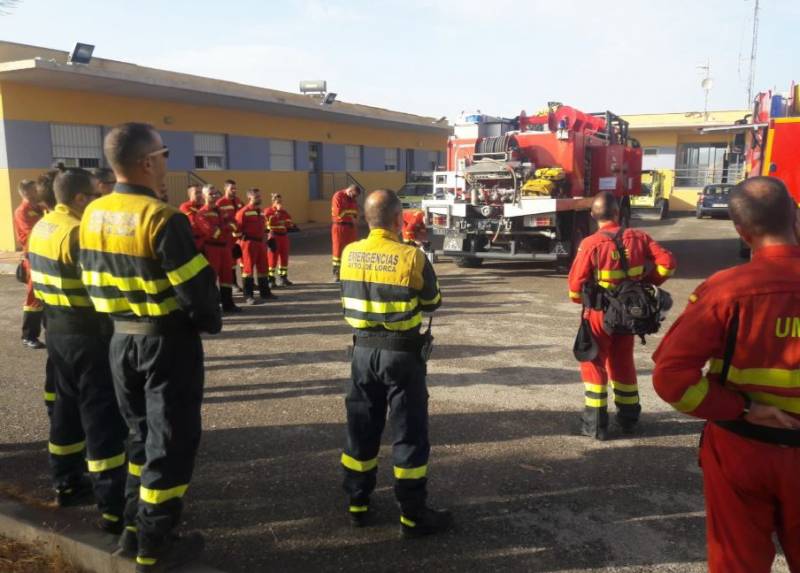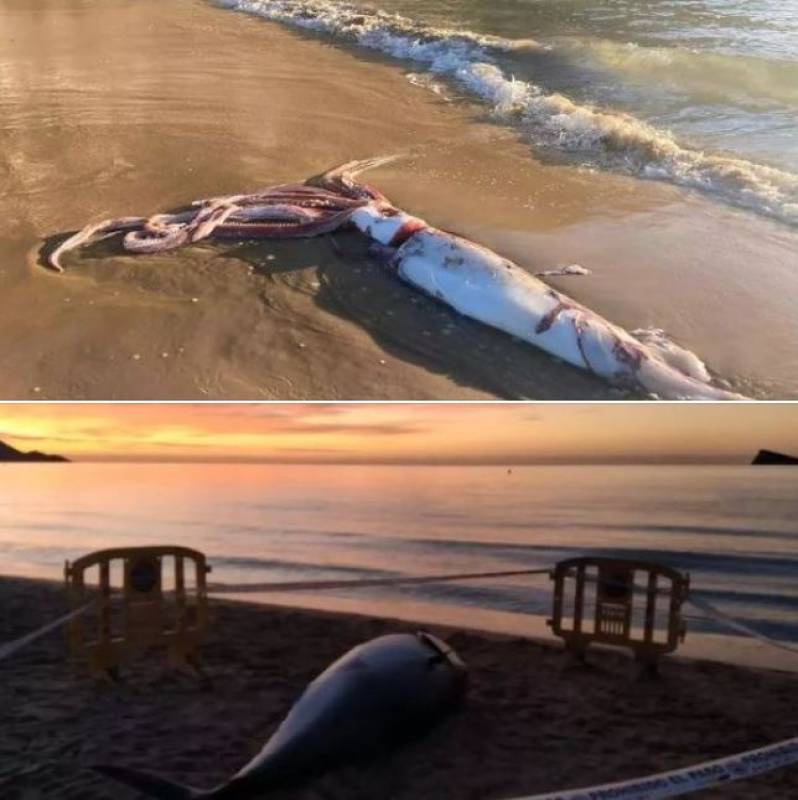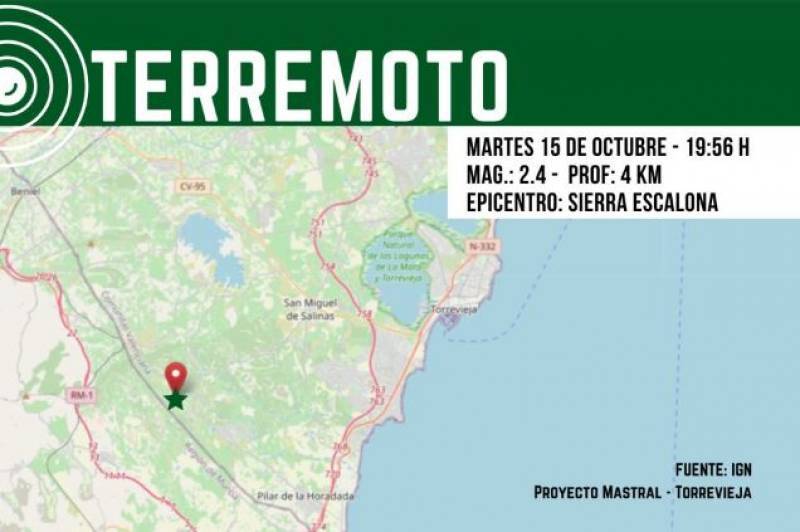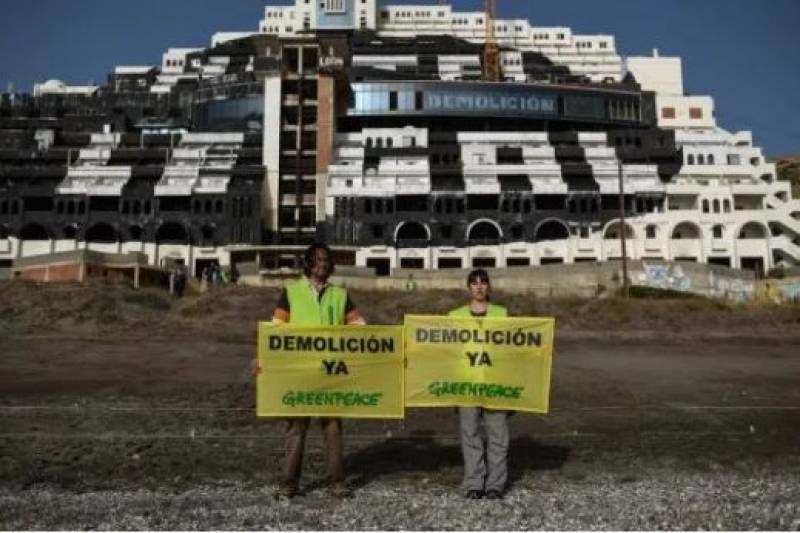

- EDITIONS:
 Spanish News Today
Spanish News Today
 Murcia Today
Murcia Today
 Alicante Today
Alicante Today
article_detail
Spanish News Today Editors Roundup Weekly Bulletin Oct 18

TOP STORIES: "Murcia Airport autumn and winter flights announced" & "Spanish pensions set to rise from 2025"
Happy Friday everybody! As we approach winter, we see the airlines scaling back the flight destinations offered at smaller airports, including the Region of Murcia International Airport, which we’ll go into in depth below.
But the cooler weather also means more cases of flu and – yep, you guessed it – Covid, and the Spanish government has some ideas about what to do to stop the spread. Plus, there is new legislation bringing in changes for pensions and tourist accommodation as of next year.
All this and more in your Spanish News Today Editor’s Roundup Weekly Bulletin.
Winter at Murcia Airport

It’s that time of year again: summer is gone, and with it the high season for tourism, which means many airports are scaling back their flights for the winter. At Murcia’s Corvera Airport, passengers were veritably spoiled for choice this summer with a whopping 24 destinations but as of the end of this month that will shrink down to a modest nine.
So, what are we left with as we move into the chillier months? Well, there will be five airlines holding down the fort, keeping Murcia connected to a total of nine cities across Spain, Ireland, the UK and Morocco.
On the domestic front, Volotea has flights to Madrid and Barcelona, while Binter is going to keep doing its Gran Canaria route. In terms of international flights, Ryanair and easyJet are maintaining their presence, offering flights to Manchester, Birmingham, Dublin and London Gatwick.
Normally Ryanair do the Manchester, Birmingham and Dublin routes while easyJet does Gatwick, but just a week out from the start of the low season and there are reports that Ryanair will be doing Gatwick flights too, something that would seem strange given they didn’t have this route either this summer or last winter.
Ryanair’s Marrakesh connection – a hot new route from last spring which we didn’t have during the last low season – also sticks around. It’s mainly there to serve the large Moroccan community living in Murcia, of course, and is also a nice option for anyone who fancies a getaway to Morocco this winter.
Speaking of Morocco, Air Arabia will keep its Oujda route going through the winter, though sadly Casablanca won’t make the cut this season. And while we wave a fond farewell to TUI Fly’s summer flights to Belgium, we’re still hanging on to our trusty routes to the UK and Ireland, plus that dash of North African charm.
So, while we’re not exactly swimming in options, it's not all doom and gloom. This summer just gone brought us exciting new routes like Marrakesh and Porto, proof that, given the right demand, airlines are willing to take a chance on adding more flights.
So who’s to say something similar couldn’t happen again this winter? After all, it’s not the airport managers but the airlines who decide what routes they will run from which airports, and they can add a new route any time they like, even in the middle of the low season if they fancy. They just have to see that enough interest from passengers is there to make it financially viable for them. So petition your airlines!
The passenger stats for this summer haven’t exactly been cause for popping champagne, with passenger numbers for September down compared to last year (2,068 fewer people passing through the airport). But a 2.3% increase over the first nine months of 2024 is still something to celebrate, and could go to show the airlines that there is still demand for Murcia flights. The road to recovery is long, but we’re inching forward.
You could complain that they shouldn’t be cutting down on flights in the winter, that they should be adding more flight destinations to and from Murcia if they want the airport and Murcian out-of-season tourism to grow. But for those who’ve been around long enough, this is just the usual cycle: summer’s influx of sun-seeking tourists disappears, and so do half the flights.
And at least this year’s batch of winter flights is no worse than last year! Think about it – there could have been fewer flight destinations for the 2024-25 low season than there were 12 months ago, but in fact we’ve got a brand-new destination in Morocco. So it’s all positive, really, isn’t it? Who knows? By next winter, we could be spoiled for choice!
Penchant for pensions

As the clock strikes midnight on December 31, Spanish pensioners can look forward to a very happy new year indeed. Starting January 1 next year, retirees receiving both contributory and non-contributory Spanish state pensions from the social security system will enjoy a substantial increase in their monthly payments, thanks to a major overhaul of the pension system throughout Spain.
The boost is not just a minor adjustment, but a significant increase that will make a real difference to the lives of pensioners. The Consumer Price Index (CPI) for 2025 is expected to be around 3.06%, which means contributory pensions will increase by a similar percentage.
On the other hand, non-contributory pensions and the Minimum Vital Income (IMV) will actually increase above inflation. These pensioners can expect an impressive 18.24% increase in their income, equivalent to an extra 350 euros per year.
In essence then, the annual amount of non-contributory pensions will reach 7,600 euros per year, distributed in 14 payments of 542.86 euros each.
The pension increase is not just a one-off either; it’s part of a broader effort to reform the pension system and ensure that pensioners can maintain a decent standard of living.
Covid again?!

Earlier this week we heard that the health authorities are keeping a close eye on a new Covid variant, a strain of Omicron known as XEC. First detected as recently as June 2024 in Germany, the variant has now reached dozens of countries including the UK, Ireland, France, Spain and the US, and experts are concerned that it could become the dominant coronavirus strain here in the coming months.
This, coupled with an increase in other respiratory illnesses and the flu in particular, has the Ministry of Health worried that hospitals and health centres will become overwhelmed, as happened last winter. So, the government is getting out ahead of it and considering reintroducing the traffic light scheme that was used during the pandemic.
With the traffic light system, autonomous communities are placed at a certain level based on a number of factors, such as hospitalisations and ICU admissions, positive Covid cases, coronavirus-related fatalities etc. This will be reviewed on a weekly basis and, depending on what level they come in on, local governments will have to implement certain restrictions, which include masks indoors.
Here’s a break-down of what the different levels look like:
- Scenario 0: the risk is low, so the only measures recommended are general hygiene e.g. frequent hand washing.
- Scenario 1: The risk is moderate, and masks are recommended in vulnerable areas within healthcare facilities. If people have symptoms, they should minimise their contact with others and follow hygiene practices for at least five days after the onset of symptoms.
- Scenario 2: The risk is high. Masks must be worn by all patients and their companions in areas such as waiting rooms and emergency rooms. In addition, masks must be used in nursing homes, shops, supermarkets, public transport, theatres, cinemas, concert halls, dance halls, gyms, or mass outdoor activities.
- Scenario 3: The risk is very high or there is a possibility of a pandemic. The measures to be taken are additional, and could include the extraordinary convening of the Interterritorial Council to strengthen coordination throughout the country. In this case, the ministry could take exceptional measures.
Even at level 1, the Ministry of Health recommends that people with symptoms or those infected with flu or Covid minimise their social interactions and wear a surgical mask for at least five days, especially if they are going to be in contact with vulnerable people. It also advises that they work remotely, if their job allows it, and, if not, that they avoid direct contact with vulnerable people in the workplace.
The Ministry of Health met with representatives from the different autonomous communities on Thursday October 17 to try to get the traffic light system pushed through, but the negotiations ended in stalemate. The plan now is for everyone to meet again in November and hopefully come up with a plan.
Murcia
 It was a bit of a funny start to the week as Murcia braced itself for potential floods as local authorities went into high alert mode over the rains that were forecast from Monday to Wednesday. Lorca, for instance, activated its INUNLOR Plan in response to the Aemet’s weather warnings, even though the likelihood of heavy rain was somewhere between 40% and 70%.
It was a bit of a funny start to the week as Murcia braced itself for potential floods as local authorities went into high alert mode over the rains that were forecast from Monday to Wednesday. Lorca, for instance, activated its INUNLOR Plan in response to the Aemet’s weather warnings, even though the likelihood of heavy rain was somewhere between 40% and 70%.Still, municipalities around Murcia felt that the threat was real enough for emergency teams to keep an eye on things around the clock, although in the end it all seemed to amount to nothing more than a lot of hand-wringing and waiting for a storm that didn’t unleash as much torrential rainfall as promised, thankfully.
Murcia was also on yellow alert for strong winds on Thursday, but those, too, were short-lived and now the forecast for this weekend is thankfully for calmer conditions and maybe even a slight rise in temperatures before more rain arrives next week.
Of course, what did show up was a significant amount of calima, that wonderful Saharan dust that comes along with passing storms, lowering the air quality and coating everything in sight with a fine layer of reddish mud when it combines with the rain. Are you going to get the pressure washer out to clean the car and patio now, or wait until after next week’s rains have gone?
In Mazarrón, the team of archaeologists that is painstakingly hauling up the remains of a 2,600-year-old Phoenician shipwreck off the Port area is still confident of making good progress, despite the stormy seas of late.
The effort to recover the ancient vessel has been going on since mid-September, with the aim of completing the mission in two months, but the inclement weather means that, at the halfway point, they have only managed to pull up 30% of the thing.
Undeterred, the scientific team remains optimistic that they’ll finish on time, assuring it will all speed up from here on out, assuming the autumn storms don’t get in the way.
Speaking of plans that might take a while to see completion, it was announced this week that work on the much-anticipated AVE high-speed rail link to Cartagena is finally, maybe, sort of starting to move forward.
The bidding process is set to begin, with actual construction slated to kick off as soon as 2027. But before you get too excited about catching a fast train to from Cartagena to Murcia any time soon, the project’s completion date remains firmly in the realm of the unknown.
The Secretary of State for Transport reassured everyone by stating this week that “once work begins, it always ends,” though exactly when that will be is anyone’s guess. But at least they’re making progress to link Cartagena to the high-speed line to Alicante, Madrid and the wider Mediterranean Corridor.
Cartagena’s connectivity isn’t the only thing that’s booming. There was a series of mysterious loud bangs in the sky this Wednesday. No, it wasn’t an earthquake or even particularly bad weather, but a KC-390 Millennium military aircraft that had flown down from Madrid to break the sound barrier during some routine manoeuvres.

We’re quite used to these occasional louds bangs by now, but for those who weren’t aware of what was going on, the noise was enough to cause some alarm, with people in mainly central parts of Murcia left wondering what on earth was happening.
As it turns out, the Patrulla Águila team was also in the air, flying about and adding to the aerial excitement. Typical, you wait three months for a supersonic aerial boom and then two come along at once…
To end this section on a heartwarming note, we bring you the news that over at the Caser Residencial Santo Ángel care home, which is on the outskirts of Murcia city, the residents, both Spanish and international, recently celebrated two big events: the Romería de Murcia and the European Day of Languages.
The former saw everyone gather for a good old-fashioned barbecue, complete with an image of the Virgen de la Fuensanta lovingly crafted by the elderly residents themselves. The latter celebration brought foreign residents from the International Unit together with the Spanish residents to share languages and cultures, with homemade pancakes providing the culinary bridge between nationalities.

The care home’s International Unit caters specifically to elderly foreign individuals and those in need of care who have moved to Spain and need care, who can be attended in their own language. It’s a nod to the multicultural nature of modern Murcia, and events like the ones put on recently really go to show what that community spirit is all about.
As always, there’s plenty for you to do around Murcia this weekend – from the Caravaca Power Pop festival this Friday and Saturday, which is exactly what it sounds like, to the Mediaeval music festival in Lorca and a Jazz quintet in Águilas. Or if music isn’t your thing, you can go to the Food Fair in Los Alcázares or the Dragon Boat Festival in San Pedro del Pinatar. Whatever your preference, you’re sure to find something to float your boat!
Remember to see our EVENTS DIARY for more events and activities coming up soon in the Region of Murcia:
Spain
 This week, the EU announced that it’s rolling out a brand-new European disability card and a European parking card for drivers with disabilities. This means that card holders will be able to enjoy reduced or free tickets, priority access, assistance and reserved parking in all EU countries.
This week, the EU announced that it’s rolling out a brand-new European disability card and a European parking card for drivers with disabilities. This means that card holders will be able to enjoy reduced or free tickets, priority access, assistance and reserved parking in all EU countries.Furthermore, citizens of countries outside the EU who are legally resident in EU member states will also be able to use these cards during short stays and holidays in other EU countries. So, British nationals resident in Spain will be able to take advantage of the perks if they go on a trip.
The blue disabled parking cards will be issued in physical format as before, but member states will have the option of producing them in digital format as well.
Once the directives are published in the official gazette of the EU, member states will have two and a half years to adapt their national legislation to both directives and three and a half years to implement the measures.
All across Spain, the cost of long-term rent has skyrocketed and with fewer and fewer properties on the market, landlords can seemingly charge whatever they like. It’s next to impossible for younger people to afford these astronomical rents, and more and more property owners are turning their houses and apartments into holiday lets to generate a higher income.
The upshot is that a huge proportion of tourist accommodation isn’t licensed and the Spanish government is constantly coming up with new ways to crack down on illegal rentals. The latest scheme, set to come into effect in January 2025, will require landlords advertising their holiday homes on online platforms like Airbnb to register their properties with the government and obtain a unique identification number.
Now, initially this will be entirely voluntary, but the government has warned that once the finer details are ironed out over the next few months, registration will be mandatory.
To register their property, owners will need to provide documentation, including proof of ownership and compliance with local and regional regulations. The registration process will also involve verifying the property’s statutes and ensuring that neighbours have not prohibited the use of the property for short-term rentals, as per the Horizontal Property Law.
Each property that is to be offered for tourist, temporary or room rental will thus have a unique identification number that will work in a similar way to the registration number of cars.
To ensure compliance, the government will launch a platform called the ‘Digital One-Stop Shop for Leases’ which will carry out “random and periodic checks” of the rental properties offered online.
A daring social media stunt turned deadly last Sunday morning when a 26-year-old British influencer plummeted to his death from the Puente de Castilla-La Mancha, one of Spain’s tallest bridges.
According to eyewitnesses, the young influencer was attempting to scale the 160ft bridge, located near Talavera de la Reina, when he lost his footing and fell around 40-50 metres from the top. His companion, another Brit, 24, was also climbing with him but managed to escape unharmed.
The police investigation has revealed that neither of the climbers was using any safety harnesses or protective gear, making the stunt even more perilous.
The tragedy unfolded around 7.15am, with a passing motorist raising the alarm after witnessing the fall. Emergency services, including police, firefighters and paramedics, rushed to the scene, but unfortunately, they were unable to save the young influencer’s life.
Local councillor Macarena Muñoz confirmed the tragedy and said climbing the bridge was “totally banned”.
Muñoz continued by stating that, “We have made it clear on several occasions that it’s not something that can be done in any circumstances.”
The Puente de Castilla-La Mancha bridge, which spans the Tagus River, 90 minutes southwest of Madrid, has been the site of several previous incidents, with thrill-seekers and social media enthusiasts drawn to its towering height.
As investigators piece together the events leading up to the tragedy, they are exploring the possibility that bad weather may have played a role. Heavy rain had fallen in the area before the incident, which may have made the bridge’s surface slippery and treacherous.
Alicante
It’s been a pretty eventful week in Alicante with a fair few unusual happenings. First off, fishermen near Benidorm made the grim discovery of not one, but two, badly decomposing bodies in the waters off El Campello.
This is a quiet fishing village just 35 kilometres from the party capital of the Costa Blanca, so the double discovery was startling for locals.
The first corpse was picked up by a fishing boat shortly before noon on Tuesday October 15, floating around a kilometre from the coast of Villajoyosa.
The drama continued later that same evening when a second body, equally decomposed, appeared in the water in the nearby Cala Piteres area. This corpse was removed from the sea at 7.30pm.
A post-mortem will now be carried out to determine the exact cause of death and attempts will be made to establish the identity of the two tragic victims.
Given the stage of decomposition, the authorities believe the bodies had been in the water for quite some time. The investigation is ongoing, but early indications suggest that the victims may have fallen from a migrant boat illegally trying to enter Spain.
It’s also been a very interesting week weather-wise, with a succession of storms battering the entire country and resulting in thousands of incidents and accidents. And while Alicante dodged the very worst of the weather, Storm Kirk still threw up a few surprises.
In Benidorm, a gargantuan tuna weighing more than 300 kilos was washed up on Poniente beach after being spotted swimming close to the shore the day before. The enormous fish was later transferred to a municipal plot for disposal.
Meanwhile, a giant squid was spotted on Sablón beach in Llanes, Asturias, in the northwest of Spain. The massive cephalopod, identified as an Architeuthis Dux, is a rare and elusive species that is rarely seen in these waters.

According to Luis Laria, president of the Coordinator for the Study and Protection of Marine Species (Cepesma), this giant squid is extremely shy and rarely seen outside of the waters of the Cantabrian Sea and New Zealand.
In Sanxenxo, a whale washed up on the beach, dragged in by the storm. The enormous specimen, which weighed around 15 tonnes and measured 18 metres in length, was later removed by a specialised company.
The appearance of these marine giants has left experts and beachgoers alike in wonder.
“It’s like something out of a Jules Verne novel,” exclaimed one, referring to the French author’s famous tale of the giant squid in ‘20,000 Leagues Under the Sea’.
The Costa Blanca is also no stranger to seismic activity, but even by its own standards, the past week has been unusually active. Seven earthquakes have struck the area, leaving residents and experts alike on high alert.
The latest tremor, measuring 2.4 on the Richter scale, hit on Tuesday October 15 at 7.56pm, with its epicentre in the Sierra Escalona region.
Although the quake was relatively mild, its shallow depth of just 4 kilometres sent minor shockwaves through nearby towns, with several people reporting feeling the tremor as far away as Torrevieja.

This latest quake is the seventh recorded by the National Geographic Institute (IGN) in the same vicinity, and while some may be alarmed by the frequency of these earthquakes, experts say there’s no cause for concern.
“Although it seems that many earthquakes are occurring in a row in this area, it is still within the normal range for an area of high seismic activity such as ours,” a spokesperson from Proyecto Mastral added.
Finally, anyone interested in food or fine dining won’t want to miss the cooking masterclass at the renowned La Galería de La Mirada restaurant in La Zenia next Monday October 21.
Starting at 12.30pm, the event will bring some of the best chefs in Spain to the Orihuela Costa, who will delight participants with their incredible skills – and some tasty tapas as well!
This exclusive event is a must-attend for foodies and professionals in the hospitality industry.
The event will also feature a special guest appearance by the outstanding chef María José San Román. Chosen by the Royal Family to prepare the lunch to commemorate the tenth anniversary of Felipe VI as head of state, San Román is a true ambassador of the Mediterranean diet and has been awarded numerous accolades throughout her career.
To confirm attendance, please register via the online form available on the Orihuela Chamber of Commerce website: www.camaraorihuela.es. You can also book your spot directly with La Mirada by calling 0034 966 74 35 02.
For other events and activities happening in the area, check out the What’s On page of Alicante Today or join the Costa Blanca What’s On and Where to Go Facebook group
Andalucía
 Since we’re getting close to Halloween, let’s start our Andalucía section with a ghost story. No, not the supernatural kind, but the seemingly indestructible Algarrobico hotel, the looming eyesore that’s unfondly known as the ‘ghost hotel’ and which has been haunting the Cabo de Gata area for 21 years now.
Since we’re getting close to Halloween, let’s start our Andalucía section with a ghost story. No, not the supernatural kind, but the seemingly indestructible Algarrobico hotel, the looming eyesore that’s unfondly known as the ‘ghost hotel’ and which has been haunting the Cabo de Gata area for 21 years now.Despite countless court battles declaring it illegal, the half-built monstrosity continues to cling to its perch in the Cabo de Gata-Níjar Natural Park, but the latest glimmer of hope comes from Andalucía’s Minister for Sustainability, who has promised that the hotel will be razed within six months.
Apparently, the final hurdle is waiting on some clarifications from the local council in Carboneras. And while you might be tempted to raise an eyebrow at yet another bureaucratic hold-up, Greenpeace is cautiously optimistic, calling this a matter of “political will”. But until the bulldozers roll in, the saga remains more of a “we’ll believe it when we see it” scenario.
In the meantime, just a few kilometres from this ghostly hotel, another demolition is actually happening, this time with a bit more certainty. Almería’s Puente del Aeropuerto, the main bridge linking the city with the airport, is due to be torn down next month as part of the grand AVE high-speed rail project, since work already well underway to bring the AVE to Almería (unlike in Cartagena).
In contrast to the interminable wait for the Algarrobico’s demise, the bridge’s demolition is a done deal, with officials reassuring everyone that the roadworks won’t snarl traffic too badly, and in the long run it will be a good thing for improved public transport links to the currently out-of-the-way Almería.
Down the coast in Málaga, there was a tragic accident this week when a 3-year-old British girl drowned in a swimming pool in the Costa del Sol’s Torrox.
Despite the efforts of emergency responders, the young girl was found dead at the scene, leaving her family and the local community in deep shock. Authorities are investigating the incident, but it all appears to have been just a terrible accident.
In Málaga city, they’re thinking less about Halloween and more about Christmas already. Can you believe it’s already that time of year when Christmas lights start making an appearance? Before we’ve barely even had time to store away our summer beach towels they’re planning when they’re going to turn on the fairy lights!
Málaga will have its usual famous Christmas lights up on Calle Larios, with the switch-on planned for November 30, but the city has also announced plans to light up the city with a nod to China’s Lantern Festival this year starting on November 29.
On a similarly wintry note, the onset of the cooler weather and the prospect of snow in Granada’s Sierra Nevada mountains means the ski season is tentatively set to begin on November 30.
Early forecasts are hopeful, with meteorologists predicting snow as early as right now thanks to the arrival of last week’s Storm Kirk, which is good news for skiers and snowboarders in southern Spain.
The Sierra Nevada resort is celebrating its 60th anniversary this season, so it’s pulling out all the stops with promotions, discounts and festivities, just in time for the December holidays. Feeling festive yet?

You may have missed…
- Drivers in Spain could be charged for crossing footpaths to park.
Millions of garage and premises owners in Spain may soon be facing a new fee for crossing footpaths to access their properties, thanks to a recent Supreme Court ruling. - Closing your Spanish bank account from abroad.
Closing your bank account in Spain from abroad—is it really possible? - The cost of registering your house at land registry in Spain.
Registering a house with the Catastro land registry in Spain is not mandatory, but it is highly recommended. Usually, it is a step most people take upon purchasing a house, because registering a house offers a series of advantages and benefits to the owners. Here’s how to do it and a price guide. - Spain demands repayment of Covid aid from thousands of self-employed workers.
Autónomos are going to court in Spain to avoid having to repay the state aid they received during the Covid pandemic. - Win free tickets to watch La Manga Club FarmFoods Golf Tournament.
Want to get down to watch the FarmFoods European Senior Masters Championship at La Manga Club in November? Murcia Today is giving away 30 free tickets, and to be in with your chance of winning all you have to do is answer one question...
And that’s all for this week. Thank you for reading once again, and keep tuned for next week’s issue.
See ya!
article_detail
Contact Murcia Today: Editorial 000 000 000 /
Office 000 000 000

















